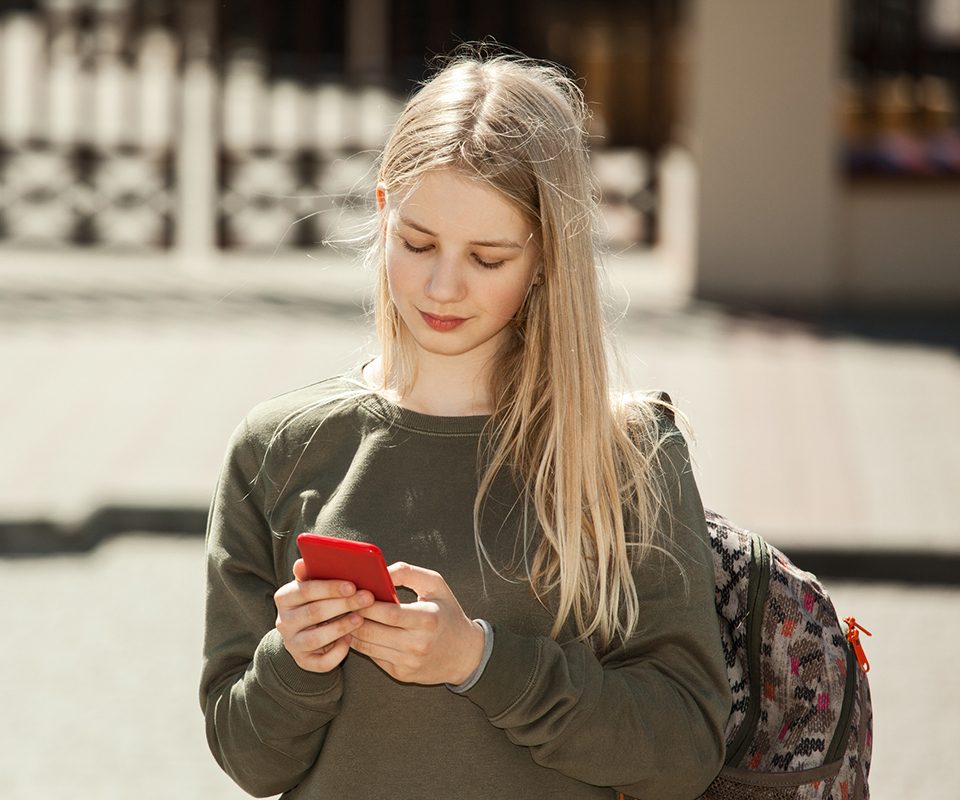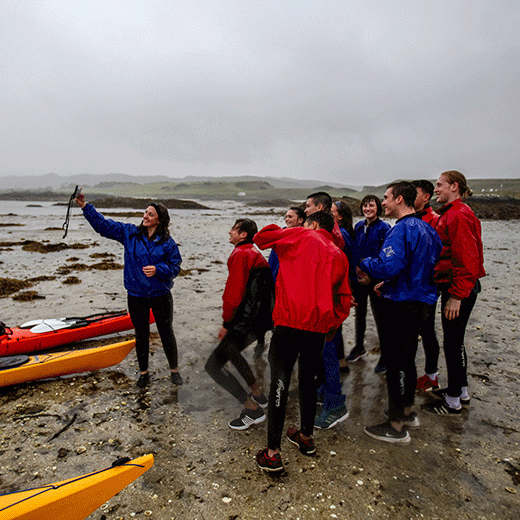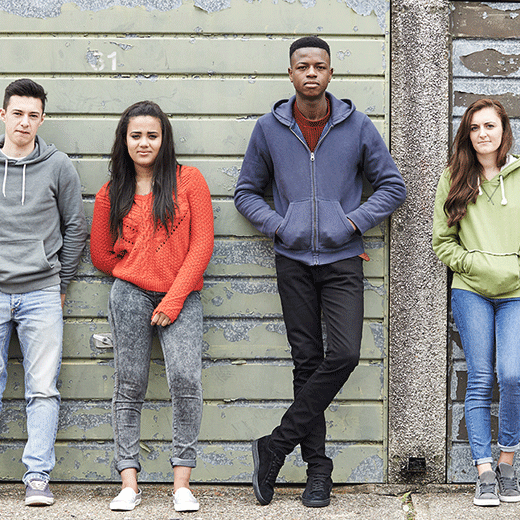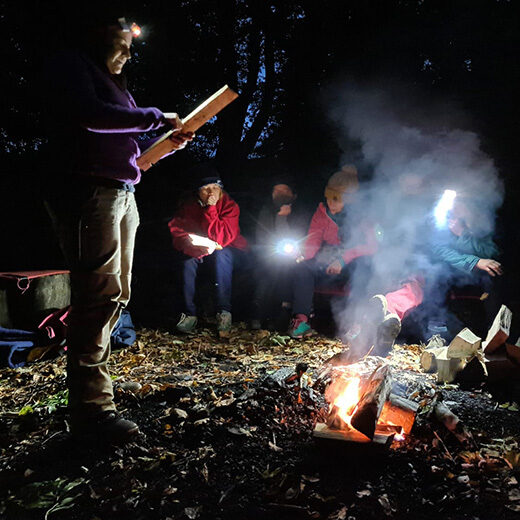Young people, Outward Bound, and mobile technologies: Initial research findings
Back in January 2022, Jack Reed introduced his research to us in this blog post. In collaboration with Outward Bound, the research explores how mobile technologies, including social media, influence young people’s adventurous residential experiences.
With all data now collected, Jack talks us through what he has been up to and introduces some of his initial findings.
What the research looked like
When I wrote the blog post that was published back in January 2022, I hadn’t started collecting data. I had a firm idea of what I was going to do, but the prospect of being out in the ‘field’ working with young people and instructors still seemed quite a long way away. Fast forward eight months, and I now have everything I need to begin answering this question: Exactly how and in what ways are mobile technologies and social media affecting young people’s adventurous residential experiences at Outward Bound?
I started by interviewing instructors, senior instructors, and learning and adventure managers at the Aberdovey, Ullswater, and Loch Eil centres. These centres are my ‘case studies’ and all three have been the focus of the research. A total of 20 interviews were conducted, all seeking to explore instructor perspectives on mobile technologies and social media in practice. This data was transcribed manually (which took a terribly long time!) and I now have a significant amount of data ready to be analysed.
Following these interviews, it was time for me to visit each centre. I spent five days at each, working directly with individual school groups. Each week I participated in all of the activities, from engaging in Jog and Dip, to rock climbing, to capsizing a canoe at Loch Eil, the research approach intentionally required me to be fully immersed in the Outward Bound experience. During each week I was undertaking observations during activities and programme downtime, conducting focus groups with young people, and interviewing visiting school staff. All with the aim of understanding how mobile technologies and social media were influencing how each group engaged with the purpose and outcomes of Outward Bound.
Exactly how and in what ways are mobile technologies and social media affecting young people’s adventurous residential experiences at Outward Bound?
Jack ReedWho I worked with
I started at Ullswater where I joined a school group from North East England with a total of 25 students and 4 visiting staff members participating in the research. From Ullswater, I went straight to Loch Eil, I recharged my batteries over the weekend and met the next school 72 hours after leaving Ullswater. This school was from Scotland’s central belt and is located within an area on the Scottish Index of Multiple Deprivation. Here, 15 students and 4 visiting staff members took part in the research. And then, after a short break in visiting centres, I went to Aberdovey where I worked with a Sikh Faith School from Metropolitan London. Here I worked with 10 young people and 3 visiting staff members.
With 20 members of Outward Bound instructional staff, 50 young people, and 11 visiting staff members, I have been able to engage with a diverse set of participants as they have all navigated their Outward Bound experiences in a time where technology and our lives are becoming increasingly indistinguishable. So, what have I found?
Initial findings
Firstly, there is too much data to share in this post, and my full analysis is yet to be completed. Here, I synthesise the core findings from across the centres to offer a flavour of the findings.
Instructor interviews
A theme developing in the instructor interviews centres on mobile phones being considered a form of portable comfort zone for young people at Outward Bound. This was linked to instructors seeing young people often becoming anxious when they do not have their phones either at the centre or out on activity.
This was of great interest for me, and I often asked for more information on this. What emerged was that instructors see young people getting anxious about two primary factors. First, this focused on contacting parents and remaining connected to broader family. Sometimes this was seen as a two way street with parents also seen to have an impact on a course by seeking contact with their young person. And second, young people express discomfort around a lack of ability to maintain Snapchat Streaks when without their phones or when in an area with no mobile signal. In some cases, instructors shared stories of young people hiding their phone when on expedition (where they are often encouraged to leave phones at the centre) in order to maintain their Snapchat Streak.

Working with young people
During my time with young people, I saw some of the anxieties that had been identified by the instructors. This centred on maintaining connectivity and speaking with home. It was common to see young people hanging out in the ‘best’ signal areas on their phones and, with Wi-Fi often going off at 10pm, concern was often expressed that they were uncontactable to friends and family. In one focus group, a young person said with a degree of seriousness that “I think I would have died if I couldn’t have spoken to my Mum this week”.
In some cases, I also saw young people hiding their phones from instructors or visiting staff. For instance, at Loch Eil, a phone was ‘smuggled’ into the centre by one participant (in a sock) and out on activity by another (interior coat pocket).
I also saw how group chats, primarily on WhatsApp and Snapchat, underpin group communication. For instance, instead of asking a fellow participant for information face-to-face, information is communicated through these online chats; this also facilitated space for group members to share photos throughout their visit.
Finally, and perhaps most starkly, I saw young people engaging with the natural environment through what I describe as a “digital or networked baseline”. An example helps to describe this. During a campfire activity, the group were attempting to light their own small fires with cotton wool. Instead of focussing on the activity and the location, this soon became about Minecraft and the group hurriedly debated how “this was much harder than on Minecraft” and how some Netherrack (a cheap Minecraft building block) would burn indefinitely if only they had some.
This example is expanded at the end of this open access publication if you would like more information. Other examples included young people trying to create “nature tattoos just like on TikTok” with ferns, and I also saw on numerous occasions how Netflix series such as Squid Game and Stranger Things alter how young people are interacting with the natural world. I’m looking forward to sharing more on this once the analysis has been completed.
What next?
These findings are very exciting, and I think have much to offer Outward Bound and the broader outdoor education sector. If you have any thoughts or questions about what I have found so far, please do not hesitate to get in touch. My email address is jack.reed@ed.ac.uk.
Next, I will be undertaking my formal analysis and will then begin to write my thesis, alongside pulling together executive summaries, delivering presentations, and writing formal publications. This is a fascinating time for the outdoor education sector and I hope this research sheds some light on the role of mobile technologies and networked spaces in contemporary practice.
Further Reading

A new PhD study
10 January 22
Networked spaces, technological connectivity and young people at Outward Bound.

A New Report: Young People's Wellbeing
20 January 22
Wellbeing: the rising crisis in young people and what we can do about it.

The impact of residentials post-pandemic
23 May 22
The role of an Outward Bound residential post pandemic